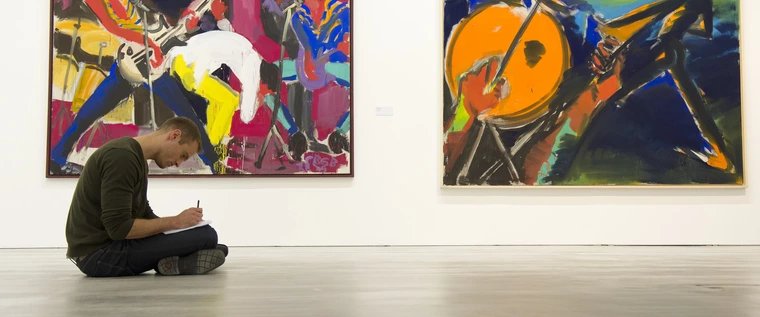
In Japan, it is not uncommon for the daytime heat of the summer months to extend well into the autumn. But as the nights grow cooler and the leaves change their colour, there is already a sense that the end of the year is approaching.
The splendorous blaze of colour that characterises the autumnal landscape is imbued with a sense of the finite nature of all things, which lends the beauty of the season a certain bitter-sweet quality. This exhibition of artworks from the museum collection traces these conflicting dimensions and ambivalent aesthetic sensibilities in Japanese art.
Images of autumn flowers and grasses, of chestnuts and the full moon depict the seasonal wonders of the natural world. The joys of going on excursions, of picnicking and gazing at the moon are all evoked by the seasonal motifs in the lacquered decoration of a rice wine bowl, a plate, and on boxes for food and for holding utensils for preparing tea.
Illustrations on polychrome woodcuts of actors from the Noh theatre performing popular roles allude to the cultural delights of the season, while depictions of Buddhist figures and acts of war echo the act of commemorating deceased ancestors and visiting their graves, which in Japan traditionally occurs in late summer.
In the gallery space, which is typically used to showcase large-format folding screens, stand as a reminder of historical tragedies a memento mori made of concrete and what at first glance appears to be a series of beautiful landscape photographs by the artist Reijiro Wada, who was born in Hiroshima in 1977 and now lives and works in Berlin.
A seascape by Leiko Ikemura, an artist from the Mie Prefecture, reveals itself upon closer inspection to depict the scene of a naval battle, and in the photographs by Muga Miyahara, who was born in Tokyo in 1971, a bomb and fighter aircrafts can be seen in a tokonoma niche that would otherwise be reserved for the quiet contemplation of art.
Rendered in the neo-traditional Nihonga (literally: pictures of Japan) style, the paintings featured in the exhibition by renowned Japanese painters like Yokoyama Taikan and Kaburagi Kiyokata that primarily depict national Japanese motifs may at first glance appear merely visually beautiful.
The artworks in question were first shown in Berlin in 1931 in an exhibition titled Japanese Painting of Today and subsequently gifted to the museum. In the very same year, the Japanese military provoked an incident in Manchuria that would herald the onset of tensions on the mainland, ultimately culminating in the Pacific War, which formed part of the Second World War.
This synchronicity serves as a point of departure for the exhibition Mio Okido: Remembered Images, Imagined (Hi)Stories – Japan, East Asia and I, which will be presented from 14 September 2024 to 3 February 2025. Through these presentations, the joys and sorrows do not fade even after the autumn has come to an end.
The Joy and Sorrow of Autumn is a special presentation by the Museum für Asiatische Kunst of the Staatliche Museen zu Berlin held at the Humboldt Forum in room 318, “Art in Japan”.
- Duration: September 11 to December 09, 2024
- free of charge
- Location: Asia 3rd floor, room 318
- Languages: German /English
- Opening hours: Exhibitions: Wednesdays to Mondays from 10:30 - 18:30. Tuesday is a regular closing day.
Dates
December 2024
| Mo | Tu | We | Th | Fr | Sa | Su |
|---|---|---|---|---|---|---|
1
| ||||||
2
|
3
|
4
|
5
|
6
|
7
|
8
|
9
|
10
|
11
|
12
|
13
|
14
|
15
|
16
|
17
|
18
|
19
|
20
|
21
|
22
|
23
|
24
|
25
|
26
|
27
|
28
|
29
|
30
|
31
|



